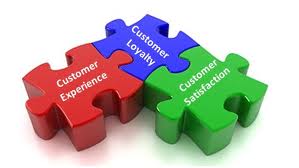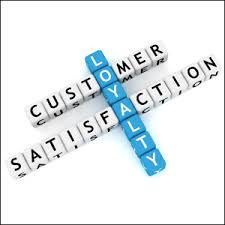Customer Satisfaction vs. Customer Loyalty
Customer satisfaction and customer loyalty are two distinctive types of concepts. Customer satisfaction refers to the measurement of customer attitudes and feelings towards products, services and brands. In contrast, customer loyalty entails loyal, repeated behaviour from customers, as the focus is whether customers make repeated purchases from the brand.
Every brand has a competitor and it’s important for brands to prevent customers from joining other brands, therefore keeping their customer happy and satisfied must be a brands priority.
Differences between customer satisfaction and customer loyalty
Customer satisfaction can depend on responses depicted from online surveys or open questionnaires. This is a very easy and simple way to collect customers’ perceptions and feelings towards the product they have purchased and maintain customer loyalty, furthermore this type of approach could help your business gather the insights you need in order to keep your customer happy as customers value the feedback provided. The predominant ideology of collecting data allows companies to review the data and to improve future amendments.
Customer loyalty on the other hand highlights customer purchase habits and whether they repeat a particular behaviour. To measure customer loyalty, a survey is undertaken to focus on predicting customer behaviour and attitudes towards the product. Customer loyalty measures are usually based on accurate transaction data that can be identified of the customer alone for example, owning maybe a loyalty card may consist of a purchase history allowing companies to follow purchase trends. It is also important to note, loyalty cards usually comes with rewards this is marketing strategy for consumers enabling them to buy more in order to gain the rewards.
Statistics
According to 2015 consumer loyalty statistics,
- 28% are loyal to their brands
- 45%of consumers maintained a consisted level of loyalty towards the top CPG brands in the US from 2014-2015.
- 89% of consumers agree with the fact that a decent service provided from the brand they engage with makes them feel more positive with 48% stating they are suspicious with how the data is used
- The top 3 reasons why consumers change brands: Cheaper prices (31%), rude staff (18%) and countless mistakes (16%)
- 61% of consumers would confide in family and friends about their experience whereas 27% stated they would sign up to loyalty programmes
- 78% of consumers have uncompleted a transaction due to poor customer service experience
- A typical business hears from 4% of dissatisfied customers
- It takes up to an average of 12 positive experiences to balance a unresolved negative experience
- It’s on average 7 times more expensive to acquire a new customer than it is to keep a current one
- For every customer to file a complaint, an average 26 will remain silent and dissatisfied
To conclude, if you want your business to succeed in the long haul, customers satisfaction must be a long term goal in your business. Satisfied, happy customers usually lead to loyal, committed customers. Therefore, businesses ensure this by using customer satisfaction feedback and online surveys.

References:
https://www.snapsurveys.com/blog/customer-satisfaction-customer-loyalty/
http://www.dmnews.com/loyalty/customer-satisfaction-is-not-customer-loyalty/article/313592/
https://aytm.com/blog/research-junction/satisfaction-vs-loyalty-two-sides-of-the-same-coin/
http://blog.accessdevelopment.com/customer-loyalty-statistics-2015-edition
https://www.helpscout.net/75-customer-service-facts-quotes-statistics/




